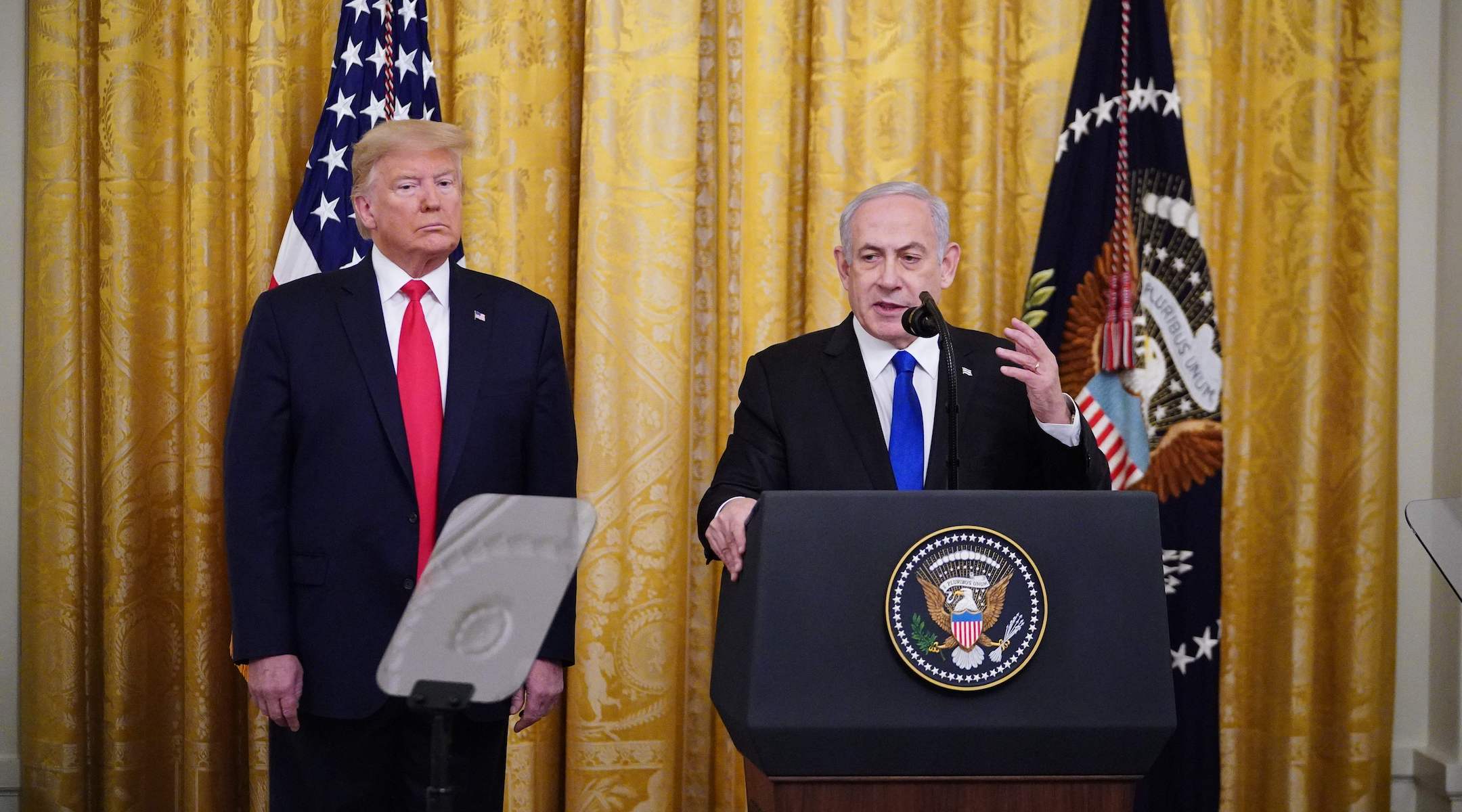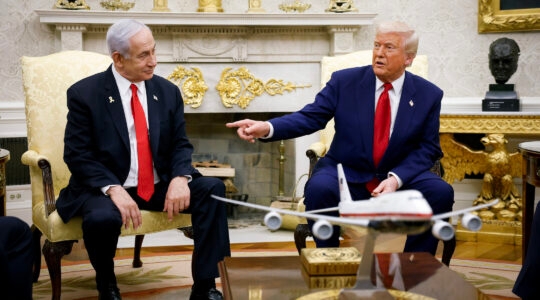(JTA) — As part of President Donald Trump’s proposed plan for Middle East peace unveiled Tuesday, Israel says it will “apply its laws” to the Jordan Valley and Israeli settlements in the West Bank.
At a news conference with Trump at the White House discussing the broad outlines of the plan, Israeli Prime Minister Benjamin Netanyahu said that Israel will otherwise “maintain the status quo” territorially for at least four years.
Application of Israeli law to parts of the West Bank would signal a major change to the territory and the contours of the Israeli-Palestinian conflict. Israel has controlled the West Bank since capturing it in the 1967 Six-Day War and has established settlements there. But according to Israeli law, no part of the West Bank has ever been treated equivalently to the rest of the country.
“On this day, you became the first world leader to recognize Israeli sovereignty over areas of Judea and Samaria,” Netanyahu said to Trump. “And on this day, you too have charted a brilliant future.”
Speaking first, Trump said that under his plan, Jerusalem will “remain Israel’s undivided capital” but a Palestinian capital will be located in East Jerusalem.
Benny Gantz, the former general who in March will compete against Netanyahu for a third time in less than a year to become prime minister, met with Trump on Monday. Trump said that Gantz pledged his full support for the peace plan.
Trump aimed to frame the plan as a deal that would equally benefit both Israelis and Palestinians — for Israelis, the codified territory recognition would bring increased security, and for Palestinians, the establishment of a state would bring prosperity, “dignity” and self-sufficiency.
“It is only reasonable that I have to do a lot for the Palestinians or it just wouldn’t be fair,” Trump said.
The president said a copy of the plan, which was released in full on Tuesday, was sent to Palestinian Authority President Mahmoud Abbas. It contains detailed maps of its proposed state outlines — a feature not included in past diplomatic frameworks for negotiations. The Palestinian state would include the Gaza Strip and parts of the West Bank.
In a call with reporters following the address, U.S. Ambassador to Israel David Friedman highlighted some key points of the plan, which he said presented “a realistic two-state solution.”
Friedman said the plan would also give Israel “the overriding security responsibility and control over entire territory from the Jordan River to the Mediterranean Sea.” He said Palestinians would have four years to accept the plan, meaning that Israel must keep “open” the territories that the plan allocates to the Palestinian state.
The ambassador said the plan includes a high speed rail connection between Gaza and the West Bank.
The plan also would require “a complete dismantling” of Hamas and Islamic Jihad, which are widely seen as terrorist groups. Friedman said the Palestinian Authority “or a similar authority that would be acceptable to Israel” would gain control over Gaza, which is currently ruled by Hamas. The Palestinian leadership would be required to end incitement toward Israelis in textbooks, as well as stop the practice of paying terrorists and their families.
JTA has documented Jewish history in real-time for over a century. Keep our journalism strong by joining us in supporting independent, award-winning reporting.






